- Home
- Eric Flint
Grantville Gazette-Volume XIII Page 23
Grantville Gazette-Volume XIII Read online
Page 23
Polyphony—music characterized by multiple melodic "voices," the interweaving of which creates vertical harmonic structures. Most Renaissance and Baroque era music is polyphonic. Most anything by J. S. Bach would serve as a good example, but I would point to the fugue section of the "Toccata and Fugue in D Minor" as being one of the easiest to find and recognize.
Homophony—music typically characterized by a single melodic "voice" supported by other "voices" which may parallel the melodic voice or may move contrary to it, but still interact with it to produce vertical harmony. Most music produced since the beginning of the Classical era is homophonic: Mozart, Beethoven, Rodgers & Hammerstein, etc. Simple examples can be found in standard church hymnals.
Symphony—as with most words ending in -phony, it's derived from Greek. The original form of the word meant an octave, and was later broadened to mean consonance. It's had various other applications over the centuries, but since the classical period began in the eighteenth century, it usually means a work for orchestra written in a particular form called a sonata form. Secondarily, it has also been applied as an adjective to the orchestra itself, as well as various other forms of music written for orchestra—i.e., symphonic poem, etc.
Adagio—a musical term with at least two different meanings:
1) a relatively slow tempo
2) a piece written to be played in the adagio tempo. A very well known and extraordinarily beautiful example is Samuel Barber's Adagio for Strings, which was used in the soundtrack of the movie Platoon.
Tempo (plural is tempi)—the speed at which a piece of music is performed.
Ritard (yes, it's spelled correctly)—musical direction that basically means slow down
Accelerando—musical direction that basically means speed up
Crescendo—musical direction that means get louder
Diminuendo—musical direction that means get softer/quieter
Forte—loud
Fortissimo—very loud
Piano—a musical term with at least two different meanings:
1) the instrument
2) soft/quiet
Pianissimo—very soft/quiet
Embouchure—the correct formation of the mouth and placement of the lips in relationship to the mouthpiece of a wind instrument.
Timbre (yes, that's how it's spelled, r before e)—a French word correctly pronounced something like "tahm-bruh"—it basically means the characteristics of the sound of a voice or instrument. The timbre of a piano is different from the timbre of a trumpet. The various stops and pipes of an organ produce tones of different timbres. The timbre of a soprano is different from the timbre of an alto.
Bibliography
A History of Western Music, Donald Jay Grout, W.W. Norton & Company, Inc, 1960
(Current edition is the seventh)
A Short History of Opera, Second Edition, Donald Jay Grout, Columbia University Press, 1965
Harvard Dictionary of Music, Second Edition, Willi Apel, editor, Belknap Press, 1969
(Current edition is The Harvard Dictionary of Music: Fourth Edition (Harvard University Press Reference Library) by Don Michael Randel (Editor))
A History of Musical Style, Richard L. Crocker, McGraw-Hill Book Company, 1966
The Encyclopedia of Music, Max Wade-Matthews and Wendy Thompson, Hermes House, 2003
Oxford Dictionary of Music, Second Edition, Michael Kennedy
The New Grove Dictionary of Music and Musicians, by Stanley Sadie (Editor)
The Guitar from the Renaissance to the Present Day, Harvey Turnbull, Charles Scribner's Sons, 1974.
(Not easy to find, but supposedly this is the standard book on the history of the guitar.)
Links
http://plato.acadiau.ca/courses/musi/callon/2233/2233.HTM
http://www.geocities.com/papandrew/outlines/grout09.html
http://www.users.globalnet.co.uk/~leonid/violin_strings.htm
The Wooden Wonders of Grantville
Written by Iver P. Cooper
The "Wooden Wonder" (or "Timber Terror") of World War II was the De Havilland Mosquito, a highly successful aircraft, made primarily from wood, used in both fighter and bomber configurations. The fact that it competed effectively with aluminum-based aircraft shows that it is a mistake to discount wood as an important resource for the USE.
Wood, of course, is a very familiar material to the down-timers, but that doesn't mean that they have nothing to learn from the up-timers. The latter can offer advice as to where to find valuable tree species not already in European use, new wood products, new uses for existing products, new equipment for processing wood, and more sophisticated forestry management techniques.
Social Aspects
The use of wood is pervasive in seventeenth century society. In consequence, changes in "wood technology" or forest management can create unpleasant surprises for the up-timers.
For example, the up-timers might want to limit the cutting of trees to "sustainable growth" levels. Yet one of the goals of the Swabian peasant rebellion of 1525 was to restore "the right to freely collect building materials and firewood from the village's forests," unless those rights "had been specifically sold off." (this was article five of "The Twelve Articles") (Sands 31; Handisides)
Another example is that we might want to build more modern sawmills, which process wood faster, with less labor and less waste. But in England, the first sawmills were attacked by mobs of handsawyers, who feared that the new equipment would deprive them of their source of living. Sawmills weren't accepted in England until 1788. Sawmills were quickly accepted in America because where there was a labor shortage (and plenty of timber)(Lillard, 23; Cox 14; Pike 39).
We might also want to protect the trees which are most suitable for shipbuilding—it will be a while before we are building all-iron ships. But Pike says that the eighteenth century British "broad arrow" policy (marking selected pine trees to reserve them for use as ship masts, and punishing scofflaws) "did more to cause the American Revolution than the Stamp Act and the tea tax put together." (Pike 48)
Grantville Forestry Resources
The up-timer Gordon Alexander (1938-) is a former employee of the USDA Forest Service. (If he were employed in West Virginia, it was most likely at the Monongahela National Forest.) While he has only a high school diploma, the Grid says that he has taken "lots of specialized courses from the Graduate School of the Department of Agriculture." The USDA Graduate School offers certificates of accomplishment in Natural History Field Studies, Horticulture, Landscaping, and other subjects. The available courses include tree identification, but not forestry management per se. Hopefully, he learned that on the job.
The Grid doesn't reveal Gordon's job title. The most common positions at the Forest Service are forestry technician (7457), forester (5287), civil engineering technician (1771), clerk/administrative assistant (1599), and civil engineer (1073). Nowadays, a forester usually will have a suitable college degree, but that might not have been true when Gordon started. A formal college education is not required for a technician, but some have associate degrees.
Phil Jenkins is a young up-timer (14 as of the RoF) with interests in "forestry and forest management." David Caine is a contractor whose company trimmed trees for the power company. Grantville also has biologists and gardeners.
Grantville residents could conceivably have taken forestry courses in West Virginia. West Virginia University (Morgantown) has an accredited professional forestry degree program, while Glenville State College (Glenville) has a forest technology program. The Grid identifies college graduates, but not the schools attended.
* * *
There are articles on trees, woods and forestry in the Grantville encyclopedias. I have checked the catalogue of the Mannington Public Library (which is the model for the Grantville one), and it has a number of useful books. There are at least seven guides to trees (they concentrate on American trees, of course) and at least two on West Virginia logging, Clarkson's Tumult on the Mo
untains and Blackhurst's Of Men and a Mighty Mountain.
* * *
It is somewhat more difficult to determine how much forest is in the Ring, and which species of trees it contains.
West Virginia, in 2000, was 76% timberland. There were eight state forests; the nearest to Mannington was the Coopers Rock State Forest in Monongalia and Preston Counties.
Grantville is in Marion County, whose timberland, in 2000, fell into the following stand-size classes: 99,300 acres of saw-timber, 17,600 pole-timber, 13,100 saplings and seedlings; total, 130,000 (65% land area). (Table 68). In terms of forest-type, there were 80,700 acres of oak/hickory, 7,200 of elm/ash/red maple, and 42,000 of northern hardwoods (Table 69).
The 2002 Census of Agriculture profile for Marion County reported that its 50,153 acres of farms included 5,887 acres of pastured woodland and 11,786 acres of unpastured woodland (figures were a little lower for 1997). Marion County has a total land area of 310 square miles (198,400 acres). The Ring has a diameter of six miles, so it has an area of 28.26 square miles (18,100 acres). If it has its fair share of the county's farm property, then it should include at least 6,500 acres of farmers' woodland. And there will be trees on residential plots, and in public areas, too. And perhaps also some outright timberland.
In Coopers Rock State Forest, about half the forest cover, found on dry ridge and upper slope areas, is dominated by trees belonging to the oak-hickory group (e.g., white oak, black oak, northern red oak, scarlet oak, chestnut oak), and are associated with yellow poplar, blackgum, sugar and red maples white and green ash, elms, basswood, cucumber magnolia, and occasional bech, black cherry, black walnut and eastern hemlock. The other half, found on stream bottoms and lower slopes, and in "moist coves," is the yellow poplar group (yellow poplar, eastern hemlock), associated with cucumber magnolia, black cherry, northern red oak, red maple, ash and black lotus. (Coopers Rock State Forest: Forest Resources Management Plan)
The state has an active "urban and community forestry" program. Their website (wvforestry.com) says that red oak, sugar maple, hackberry, white ash, scarlet oak and hophornbeam are good for street tree use, and that serviceberry, black gum, hornbeam, swamp white oak, tulip tree and river birch are good for landscape use.
There was a state tree nursery in West Columbia WV, from which West Virginia landowners could purchase "urban green units" (minimum order of two units, 25 trees per unit) of white pine, Scotch pine, red pine, Virginia pine, Norway spruce, Japanese larch, Douglas fir, European black alder, black locust, black wlnut, Chinese chestnut, chinquapin, "Streamco P. Willow cuttings," red oak, chestnut oak, white oak, American chestbut, and butternut.
There are several tree farms in Marion County (e.g., the 378 acre Crawford Tree Farm), but none, so far as I know, that would have been captured by the Ring of Fire. Of course, Grantville residents may have purchased trees from these tree farms.
European Forests
Deforestation—the loss of forest cover—has been a recurring problem in world history in general, and in Europe (and its colonies) in particular. The principal cause of deforestation was the clearing of land for farming. However, the use of wood as a fuel and building material was also important.
So far as early seventeenth century forest cover is concerned, it is a mistake to treat Europe as a monolithic entity. At one extreme, we have Poland, Russia, Norway (part of the Kingdom of Denmark) and Sweden (including Finland), which export timber to less fortunate countries. At the other extreme, we have Spain (including Portugal), Italy, the Netherlands, Denmark proper, and to a lesser extent England, which are largely denuded, and thus heavily dependent on the Baltic timber trade. France and Germany are in-between; there are still significant forests, but those countries have been forced to take various conservation measures, and also to import some wood. (Elliot, 11-12)
Cox says that in the late seventeenth century, only one-eight of England's original forest remained. (Cox 26). According to Clark, the price of firewood was 7.81 shillings per cord in 1540, 16.94 in 1570, 18.62 in 1600, and 26.09 in 1630. Timber prices were anomalously low (3.11 shillings per cubic foot) in 1630; the price was 8.00 in 1631, as compared to 2.87 in 1600.
In France, forest area declined from 35% at the beginning of the sixteenth century, to 25% in the middle of the seventeenth century. (Sands 32)
In 1602, Denmark banned the export of oak; they needed it for their own navy. This forced the British (and Dutch) to rely primarily on timber from Konigsberg and Danzig. (Tossavainen sec. 6.2.1) By 1628, oak was once again a Danish-Norwegian export, but the trade in large timbers (e.g., for masts) was forbidden in 1640 (6.5).
The 1911 Encyclopedia Britannica (EB11) reports the forested area, relative to total area, for each European country. Bear in mind that it is likely that these values are mostly lower than those which prevailed in the early seventeenth century, except that there was some reforestation in the nineteenth century. In particular, 1911 Norway is probably lower than in the seventeenth century, and Greece, Italy and Spain higher. This probably reflects the depletion of Norwegian timber by exports to England, and the recovery of southern European forests thanks to diminished naval and merchant fleet building.
The large-scale transportation of timber down the Rhine, from sources in the Black Forest, Alsace, and around Lake Constance, began around 1250. The trees were cut in the winter, when sap was low and the logs could be dragged across ice or snow, and then rafted downstream come spring.
In the 1650s, the Dutch got their timber primarily from Norway (about 125,000 "lasts"), but the Rhineland was also a source (about 22,000 lasts). In the following decade, their Rhineland imports climbed to over 60,000 lasts. (De Vries, 427)
Deforestation was certainly a problem in parts of seventeenth century Germany. In 1662, John Evelyn wrote that in Alzey, Germany, near Worms, the inhabitants were so "miserably distressed for wood," as a result of their own destructive habits, that "they were reduced to make use of straw for their best fuel." (Evelyn XXI 4). But Thuringia, at least, is still heavily wooded. ( 1632, Chaps. 11, 51).
In general, deforestation in Germany (especially in the south) wasn't as severe as in England. The literature on the American colonies refers repeatedly to how clueless English settlers had to seek forestry guidance from those of German as well as Scandinavian descent. For example, discussing American architecture, Cox says, "Log [cabin] construction techniques were introduced by Europeans from more heavily forested areas—Germans, Finns, Swedes. . . ." (Cox 8; Lillard 15) Later, referring to the production of tar and turpentine, Cox states, "Authorities tried to increase efficiency by sending knowledgeable Germans, Poles and Scandinavians into the woods. . . ." (17) Fire-clearing, and communal logrolling bees, were introduced to Pennsylvania by Swedes, Finns and Germans. (10) Axwork was taught by Swedes and Germans (Lillard 19). The Germans wouldn't have had this expertise if they didn't have forests to acquire it in.
The principal forests of Germany include the Thuringerwald in Gotha, the Schwartzwald (Black Forest) in Baden-Wurtttemberg, the Odenwald in Hesse, the Spessart between Aschaffenburg and Wurtzburg, the Baierischerwald near Bohemia, the Kranzberg near Munich the Frankenwald in northern Bavaria. German trees included spruce, silver fir, Scotch pine, birch, beech, and oak ("Forests and Forestry", EB11).
Trees and Wood
To botanists, trees are either gymnosperms (plants with needle-shaped leaves, bearing cones and naked seeds) or angiosperms (plants with broad leaves, which produce seeds encased in a seed coat). For commercial purposes, trees are divided into two major classes: softwoods and hardwoods. The softwoods are usually gymnosperms (conifers) and the hardwoods are usually angiosperms (broadleaved trees). There are, however, tropical angiosperms with soft wood, and there are conifers whose wood is quite hard (e.g., pitch pine).
* * *
Within a given tree, the wood is differentiated into the central heartwood and the peripheral sapwood. The average commercial log is 25-30% sapwood, so we would prefer not to wa
ste it, if that can be avoided. Heartwood is more strongly colored than sapwood, and so, for ornamental use, heartwood is usually preferred (although sapwood can be stained). Sapwood and heartwood are usually of equal weight if they have the same moisture content. Sapwood is not significantly inferior in strength to heartwood of the same moisture content and density. Unfortunately, sapwood is usually more vulnerable to attack by fungi and insects than heartwood. So durability is a problem if the wood is to be used outdoors, or elsewhere where the risk of attack is significant. One consolation is that sapwood is more readily impregnated with preservatives. (Desch, 51-56).
The branch of a tree bends in response to gravity, putting the top into tension and the underside into compression. If the trunk of a tree leans, the wood is tensed on one side and compressed on the other. The living tissues of a wood react to stress by forming lignin-rich tension wood on top (hardwoods), or cellulose-rich compression wood underneath (conifers). These reaction woods are usually considered undesirable. However, for skis, compression wood had the advantages of drying faster without warping, and of not sticking to thawing snow. (Wikholm)

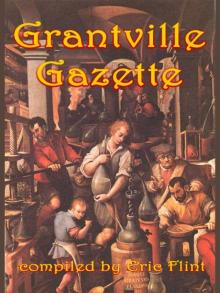 The Grantville Gazette Volumn VI
The Grantville Gazette Volumn VI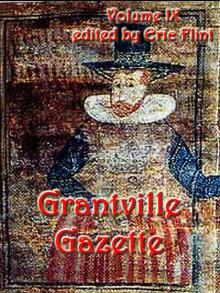 Grantville Gazette, Volume IX
Grantville Gazette, Volume IX Ring of Fire III
Ring of Fire III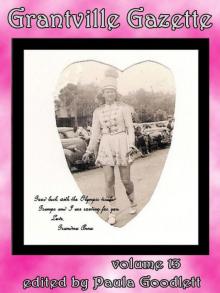 Grantville Gazette-Volume XIII
Grantville Gazette-Volume XIII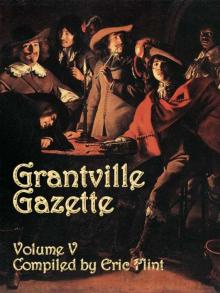 Grantville Gazette V
Grantville Gazette V 1635: The Eastern Front
1635: The Eastern Front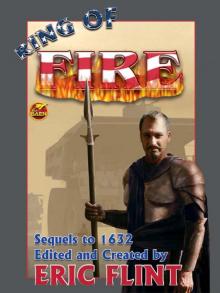 Ring of Fire
Ring of Fire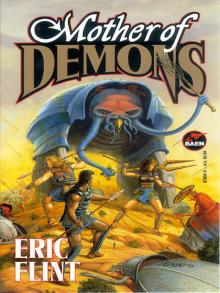 Mother of Demons
Mother of Demons 1824: The Arkansas War
1824: The Arkansas War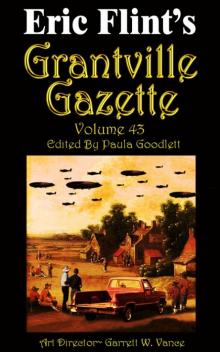 Grantville Gazette 43
Grantville Gazette 43 Forward the Mage
Forward the Mage The World Turned Upside Down
The World Turned Upside Down Ring of Fire II
Ring of Fire II Boundary
Boundary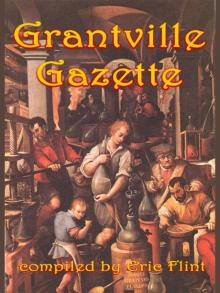 Grantville Gazette VI
Grantville Gazette VI 1812: The Rivers of War
1812: The Rivers of War 1633
1633 All the Plagues of Hell
All the Plagues of Hell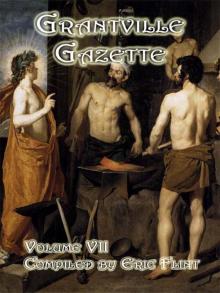 Grantville Gazette, Volume 7
Grantville Gazette, Volume 7 Worlds
Worlds 1632
1632 The Alexander Inheritance
The Alexander Inheritance Diamonds Are Forever
Diamonds Are Forever The Philosophical Strangler
The Philosophical Strangler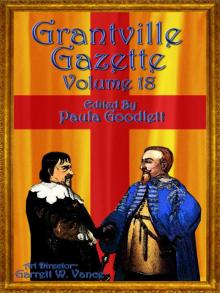 Grantville Gazette, Volume VIII
Grantville Gazette, Volume VIII Grantville Gazette-Volume XIV
Grantville Gazette-Volume XIV Genie Out of the Bottle
Genie Out of the Bottle Pyramid Scheme
Pyramid Scheme 1636- the China Venture
1636- the China Venture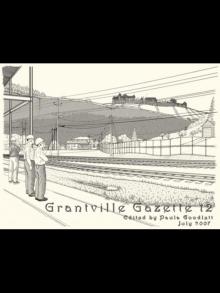 Grantville Gazette, Volume XII
Grantville Gazette, Volume XII Grantville Gazette, Volume I
Grantville Gazette, Volume I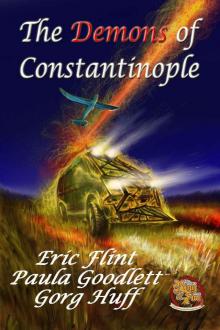 The Demons of Constantinople
The Demons of Constantinople The Macedonian Hazard
The Macedonian Hazard 1634- the Galileo Affair
1634- the Galileo Affair The Shaman of Karres
The Shaman of Karres 1636: The Ottoman Onslaught
1636: The Ottoman Onslaught The Genie Out of the Vat
The Genie Out of the Vat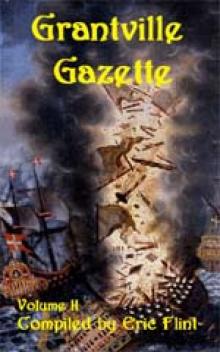 The Grantville Gazette Volumn II
The Grantville Gazette Volumn II 1636: The Saxon Uprising
1636: The Saxon Uprising 1634 The Baltic War
1634 The Baltic War 1636: Mission to the Mughals
1636: Mission to the Mughals !632: Joseph Hanauer
!632: Joseph Hanauer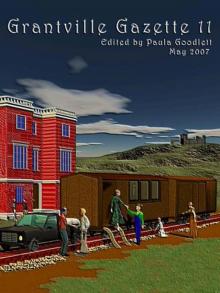 Grantville Gazette-Volume XI
Grantville Gazette-Volume XI 1637: The Peacock Throne
1637: The Peacock Throne 1636: The China Venture
1636: The China Venture The Rats, the Bats & the Ugly
The Rats, the Bats & the Ugly Grantville Gazette, Volume X
Grantville Gazette, Volume X The Course of Empire
The Course of Empire Pyramid Power
Pyramid Power 1636: The Devil's Opera
1636: The Devil's Opera Ring of Fire IV
Ring of Fire IV Grantville Gazette. Volume XX (ring of fire)
Grantville Gazette. Volume XX (ring of fire) 1634: The Baltic War (assiti chards)
1634: The Baltic War (assiti chards) The tide of victory b-5
The tide of victory b-5 1634: The Ram Rebellion
1634: The Ram Rebellion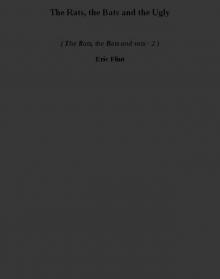 The Rats, the Bats and the Ugly trtbav-2
The Rats, the Bats and the Ugly trtbav-2 Castaway Resolution
Castaway Resolution Council of Fire
Council of Fire Slow Train to Arcturus
Slow Train to Arcturus 1637_The Volga Rules
1637_The Volga Rules Boundary b-1
Boundary b-1 1637: No Peace Beyond the Line
1637: No Peace Beyond the Line The Sorceress of Karres
The Sorceress of Karres Destiny's shield b-3
Destiny's shield b-3 In the Heart of Darkness b-2
In the Heart of Darkness b-2 Grantville Gazette.Volume 22
Grantville Gazette.Volume 22 Carthago Delenda Est э-2
Carthago Delenda Est э-2 1635: The Eastern Front (assiti shards)
1635: The Eastern Front (assiti shards) 1812-The Rivers of War
1812-The Rivers of War The Dance of Time b-6
The Dance of Time b-6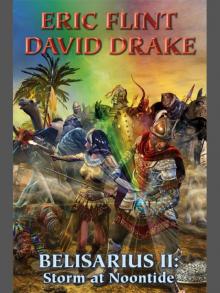 Belisarius II-Storm at Noontide
Belisarius II-Storm at Noontide Iron Angels
Iron Angels 1636:The Saxon Uprising as-11
1636:The Saxon Uprising as-11 1812: The Rivers of War tog-1
1812: The Rivers of War tog-1 Jim Baens Universe-Vol 1 Num 6
Jim Baens Universe-Vol 1 Num 6 Fortune's stroke b-4
Fortune's stroke b-4 1637 The Polish Maelstrom
1637 The Polish Maelstrom The Shadow of the Lion hoa-1
The Shadow of the Lion hoa-1 Grantville Gazette.Volume XVI
Grantville Gazette.Volume XVI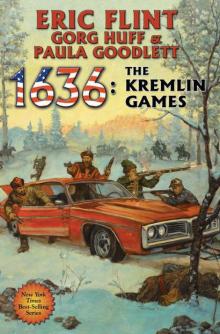 1636:The Kremlin games rof-14
1636:The Kremlin games rof-14 1824: The Arkansas War tog-2
1824: The Arkansas War tog-2 Time spike
Time spike Jim Baen's Universe-Vol 2 Num 1
Jim Baen's Universe-Vol 2 Num 1 Grantville Gazette.Volume VII
Grantville Gazette.Volume VII 1634: The Ram Rebellion (assiti shards)
1634: The Ram Rebellion (assiti shards) Grantville Gazette.Volume XVII (ring of fire)
Grantville Gazette.Volume XVII (ring of fire) Jim Baens Universe-Vol 2 Num 5
Jim Baens Universe-Vol 2 Num 5 1635: The Cannon Law (assiti shards)
1635: The Cannon Law (assiti shards) Grantville Gazette. Volume 21
Grantville Gazette. Volume 21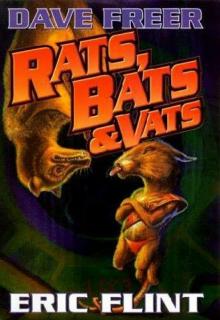 Rats, Bats and Vats rbav-1
Rats, Bats and Vats rbav-1 1636_The Vatican Sanction
1636_The Vatican Sanction The Aethers of Mars
The Aethers of Mars Jim Baen's Universe Volume 1 Number 5
Jim Baen's Universe Volume 1 Number 5 1634: The Bavarian Crisis (assiti chards)
1634: The Bavarian Crisis (assiti chards) Grantville Gazette Volume 24
Grantville Gazette Volume 24 TITLE: Grantville Gazette.Volume XVIII (ring of fire)
TITLE: Grantville Gazette.Volume XVIII (ring of fire) Ring of fire II (assiti shards)
Ring of fire II (assiti shards) 1635:The Dreeson Incident (assiti shards)
1635:The Dreeson Incident (assiti shards) Jim Baen's Universe-Vol 2 Num 4
Jim Baen's Universe-Vol 2 Num 4 In the Heart of Darkness
In the Heart of Darkness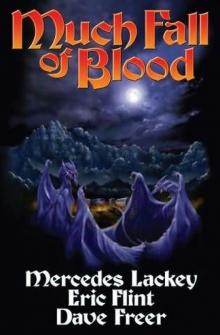 Much Fall Of Blood hoa-3
Much Fall Of Blood hoa-3